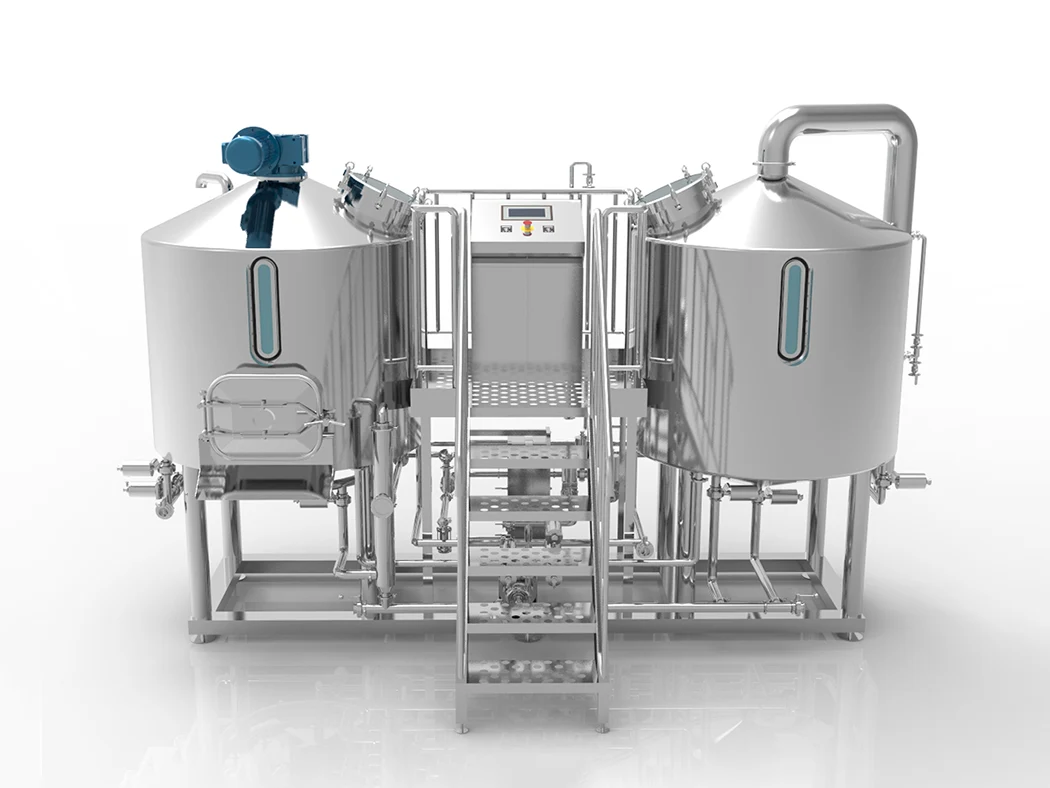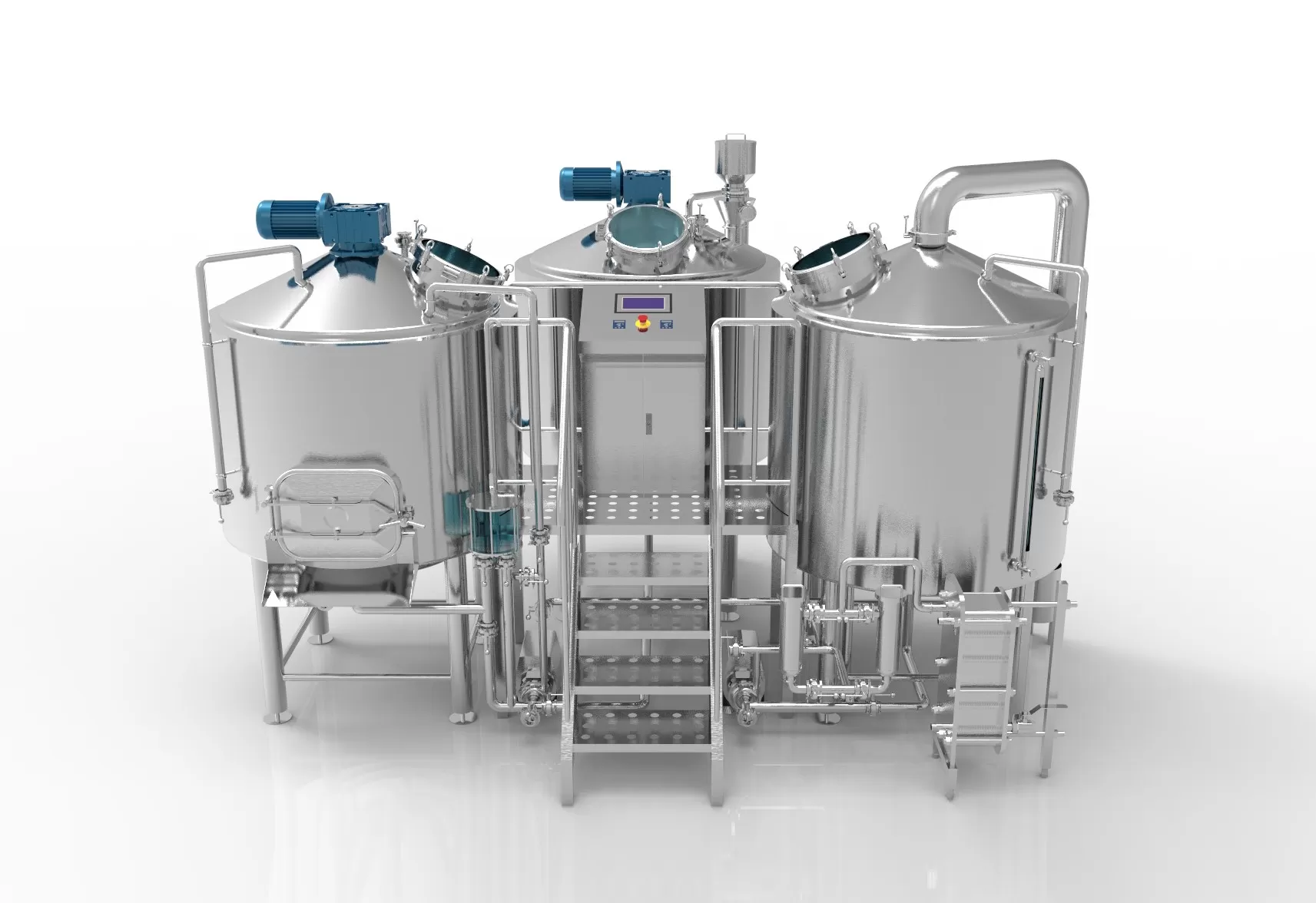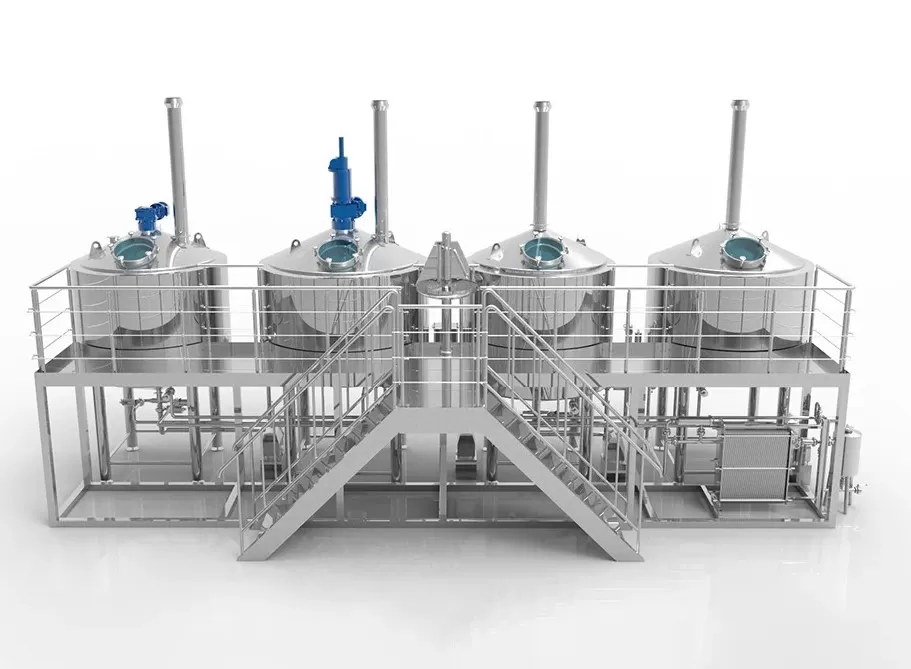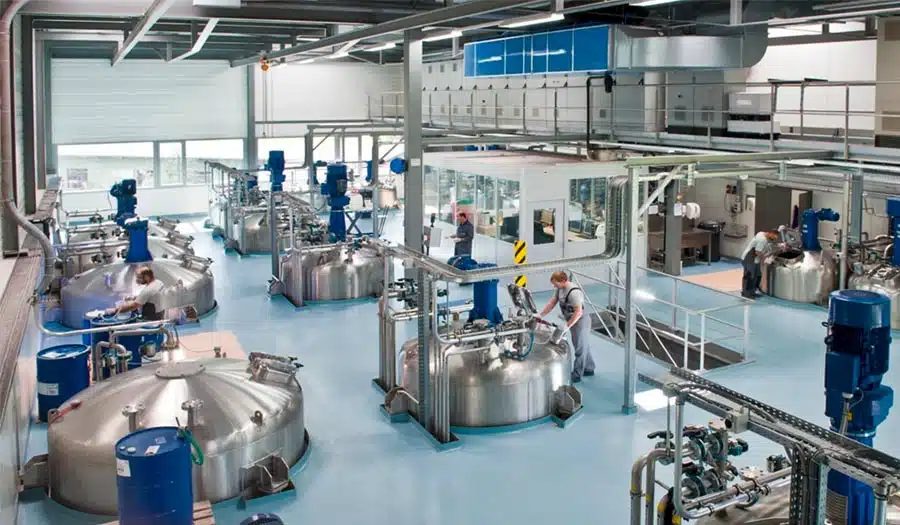Beer brewing has been an important activity in human civilization since ancient times. With the development of technology, the methods of brewing beer have continued to evolve. From the earliest manual brewing to today’s automated equipment, the automation of the brewing process has become a trend. In the market, manual brewing equipment and automated brewing equipment each have their unique advantages and scope of application. So, when choosing beer brewing equipment, how should we choose between automation and manual? This article will make a detailed comparison of the differences between automated beer brewing equipment and manual beer brewing equipment, and provide reference suggestions on how to choose.
Meaning of manual beer brewing equipment
Manual beer brewing equipment refers to brewing equipment that mainly relies on manual operation rather than automated system control during the brewing process. This type of equipment is usually suitable for home brewing enthusiasts, small craft breweries, and experimental brewing scenarios. Manual brewing equipment allows brewers to finely control every link, making the brewing process full of personalization and creativity.
Manual brewing equipment usually includes the following core parts:
- Mashpot: The mash pot is used to heat and mix raw materials such as malt and water to convert the starch into sugar, providing the necessary sugar matrix for fermentation. Manual mash pots are usually made of stainless steel or copper, and brewers need to manually control the heating temperature and stir to ensure that the mash process proceeds smoothly.
- Filtration system: After mashis completed, the liquid part (wort) needs to be separated from the solid residue. Manual equipment usually uses a filter barrel, malt bed, or filter for filtration, and brewers need to manually adjust the flow rate to ensure that the sugar is fully extracted.
- Boiling pot: The boiling pot is used to heat the wort at high temperatures, and hops are added to provide bitterness and aroma. Manual equipment requires brewers to closely monitor the boiling time and manually add hops at the right time to ensure flavor balance.
- Cooling system: The boiled wort needs to be quickly cooled to a temperature suitable for yeast fermentation. Manual cooling equipment usually includes a coil cooler or a cooling plate, and brewers need to manually adjust the cooling water flow rate to achieve a suitable temperature.
- Fermentation barrel: The cooled wort needs to be transferred to the fermentation barrel and yeast is added for fermentation. The fermentation barrel of manual equipment is usually equipped with a valve to release carbon dioxide, but the temperature control usually depends on the external environment, and the brewer needs to manually monitor and adjust the fermentation temperature.
- Bottling or storage equipment: After fermentation, the beer needs to be bottled or stored. Manual brewing equipment usually uses tools such as manual filling and capping machines, and the entire packaging process relies entirely on manual operation.

Features and advantages and disadvantages of manual beer brewing equipment
Advantages of manual brewing
- Lower equipment cost: Manual brewing equipment is usually cheaper than automated equipment, suitable for beginners and small brewing enthusiasts with limited budgets. For entry-level brewers, manual equipment is a good choice because they are relatively affordable and can meet basic brewing needs.
- Strong flexibility: Manual brewing equipment allows brewers to make fine adjustments in each link and can operate according to personal experience and preferences. This flexibility is especially important for brewing enthusiasts who want to make customized brewing. For example, controlling the fermentation temperature, the timing of the stirring process, the way of adding raw materials, etc. can all be finely controlled.
- Traditional flavor retention: For many brewing enthusiasts, the traditional flavor retained by manual brewing is a key factor in their choice. During the manual operation process, the brewer can adjust according to personal experience and skills to achieve the best taste. Many people believe that traditional hand-brewed beer is richer and has a personalized flavor.
Disadvantages of manual brewing
- Time-consuming and labor-intensive: Manual brewing requires brewers to invest a lot of time and energy. The operation of each link requires manual intervention, which means that the brewing process is time-consuming and cumbersome. For busy people, manual brewing may make them feel overwhelmed.
- High technical threshold: Although manual brewing seems simple, it relies on the experience and skills of the brewer. If the brewer is not familiar with the brewing process, it may lead to unstable brewing quality. In addition, manual brewing requires precise control of multiple links such as fermentation and temperature control. Once a mistake occurs, it may cause changes in the flavor of the beer.
- Not easy to mass produce: Manual brewing equipment is suitable for small batch brewing, but for large-scale production, manual equipment has low production efficiency and is difficult to meet demand. In the production process, many steps require manual intervention, which cannot achieve fast and efficient production.

What is automated beer brewing equipment?
Automated beer brewing equipment refers to brewing equipment that relies on automated control systems to complete key steps such as mash, filtration, boiling, cooling, and fermentation during the beer brewing process. This type of equipment uses computer programs, sensors, and actuators to achieve precise control of parameters such as temperature, time, and flow, greatly reducing manual intervention and improving production efficiency and product quality stability. Automated brewing equipment is widely used in industrial breweries, large-scale craft breweries, and small and medium-sized brewers who want to improve production efficiency.
- Automatic mash system: mash is the first step in beer brewing, which is to convert starch in malt into fermentable sugars. The automated mash system is equipped with an intelligent temperature control device that can set heating time and temperature changes to ensure that the mash process is carried out according to the preset program to avoid human errors.
- Automatic filtration system: After mash is completed, the wort needs to be separated from the dregs. The automatic filtration system can accurately control the flow rate, optimize the wort extraction rate, and reduce manual operations to ensure a stable filtration effect.
- Automatic boiling and hop addition system: The boiling process is used to sterilize and extract the flavor components of hops. Automated equipment can set the boiling time and temperature, and accurately add hops according to the program to ensure that each batch of beer has the same flavor.
- Automatic cooling system: The boiled wort needs to be quickly cooled to a temperature suitable for fermentation. The automatic cooling system can accurately control the cooling speed through the heat exchanger, improve cooling efficiency, and reduce oxidation risks.
- Automatic fermentation control system: Fermentation is a key link in determining the flavor of beer. The automatic fermentation system ensures that the yeast works in the best environment through temperature control, pressure regulation, oxygen management, and other means to avoid flavor deviation due to temperature fluctuations or oxidation.
- Automatic filling and packaging: Some high-end automated equipment is equipped with filling and packaging systems, which can realize automatic filling, capping, and labeling, greatly improving production efficiency, and is suitable for commercial large-scale production.
Characteristics and advantages and disadvantages of automated beer brewing equipment
Advantages of automated brewing
- High efficiency and stability: Automated beer brewing equipment can realize automatic control and adjustment, which greatly improves the efficiency and stability of the brewing process. With the help of automated equipment, brewers can complete large-scale production in a shorter time and ensure the consistent quality of each batch of beer, avoiding fluctuations caused by human factors.
- Reducing manual intervention: An important feature of automated equipment is that it can reduce manual intervention. All aspects of brewing can be controlled by computer programs, so as to achieve precise temperature control, fermentation monitoring, stirring, and other operations. In this way, brewers can save a lot of time and energy and focus on other creative work.
- Increase production scale: Automated equipment can usually handle the workload required for large-scale production. Therefore, for commercial breweries that need to carry out large-scale brewing, automated equipment is undoubtedly the best choice. It can ensure the efficiency and consistency of production and meet the needs of the market.
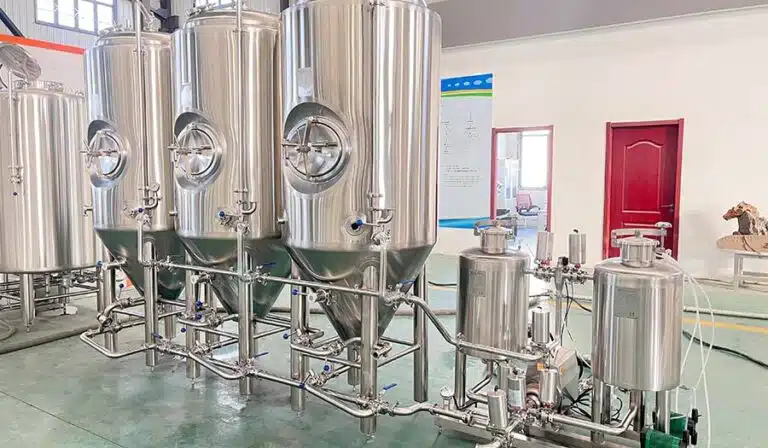
Disadvantages of automated brewing
- High equipment cost: The price of 자동화된 양조 장비 is usually high, especially for large-scale, high-end automated systems. This may be a big burden for brewers with limited initial funds.
- Lack of personalization and flexibility: Although automated equipment can ensure consistency and efficiency in production, in some cases, it may lack the personalization and flexibility of manual brewing. For brewers who want to create a specific flavor through subtle adjustments, automated equipment may not be flexible enough. Each step needs to be performed according to the procedure, and there is no room for adjustment when operating manually.
- High technical requirements: Automated brewing equipment requires high technical support and maintenance. When the equipment fails, the brewer needs to have certain technical capabilities to repair and maintain it. In addition, the operation of the equipment also requires professional training, which may require a certain learning cost for non-professionals.
Automation vs. Craft Beer Brewing Equipment
|
Comparison Criteria |
Manual Brewing Equipment |
자동화된 양조 장비 |
|
Operation Mode |
Relies on manual operation, each step is done by hand |
Uses computer control, automates the brewing process |
|
Production Efficiency |
Slower production, requires more time to complete |
High efficiency, significantly reduces brewing time |
|
품질 일관성 |
Affected by human factors, each batch may vary |
Stable quality, ensures consistency in every batch |
|
유연성 |
Allows adjustments to recipes, ideal for personalized flavors |
Controlled by programmed settings, less flexibility |
|
Cost Investment |
Lower equipment cost, small initial investment |
Higher equipment cost, suitable for large-scale production |
|
Labor Demand |
Requires more manpower, labor-intensive |
Requires less manpower, reduces labor costs |
|
Suitable Users |
Ideal for home brewers, small craft breweries |
Suitable for medium to large-scale breweries, industrial production |
|
Technical Difficulty |
Requires knowledge of brewing techniques, experience matters |
Relies on automation, easier to operate |
How to choose automatic or manual beer brewing equipment?
When choosing automatic or manual beer brewing equipment, you need to consider many factors, including budget, production scale, brewing experience, target market, etc. Here are some selection suggestions to help you make the most appropriate decision.
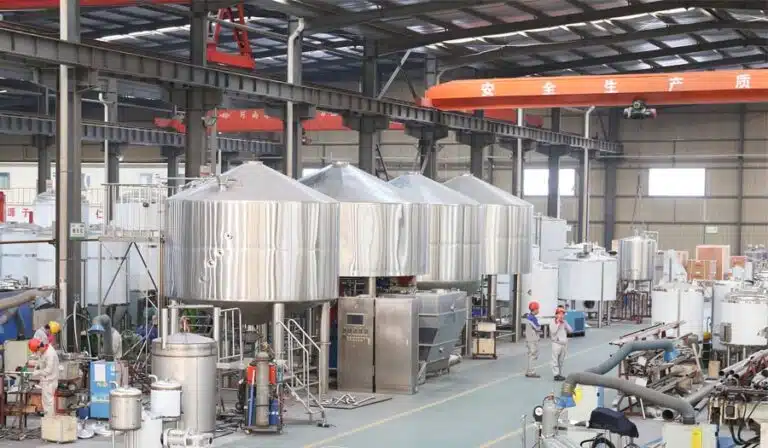
Choose according to budget.
If your budget is limited and you are just starting to get involved in beer brewing, manual equipment may be a more suitable choice. The initial investment in manual equipment is relatively low, which is suitable for small-scale production or home brewing. If the budget is sufficient and you intend to carry out large-scale commercial production, automated equipment will be a more suitable choice. Although they require a higher initial investment, in the long run, they can improve production efficiency and reduce labor costs.
Choose according to the production scale.
If you are a home brewing enthusiast and usually do not involve large-scale production, then manual brewing equipment is sufficient to meet your needs. Manual equipment is more suitable for small-batch brewing and can bring more personalized operating space. For commercial breweries, especially those that require large-scale production, automated equipment is more suitable because it can improve production efficiency and ensure product consistency.
Choose according to your brewing experience.
For brewing enthusiasts with some brewing experience, manual equipment can provide more operating space and creativity and is suitable for those who want to use their skills to mix unique flavors. For beginners or those who do not have much brewing experience, automated equipment will be relatively simple and convenient. They can help brewers avoid operating errors and ensure the stability of the brewing process.
Choose according to the target market.
If you plan to bring beer to the market, especially to meet the commercial needs of a large number of consumers, automated equipment is undoubtedly a more suitable choice. Automated equipment can help you improve production efficiency and ensure the consistency of product quality to meet the market’s demand for mass production. If you just want to meet family and small-scale needs, manual equipment is enough.
요약
Manual and automated beer brewing equipment each has its advantages and disadvantages. When choosing, you need to consider factors such as budget, production scale, flavor requirements, and available manpower. If it is a home brewing or a small craft beer brand, manual equipment is more suitable; if it is commercial production or you want to improve efficiency, automated equipment is a better choice. The final decision should be combined with your own needs to ensure that the equipment can meet your brewing goals.

